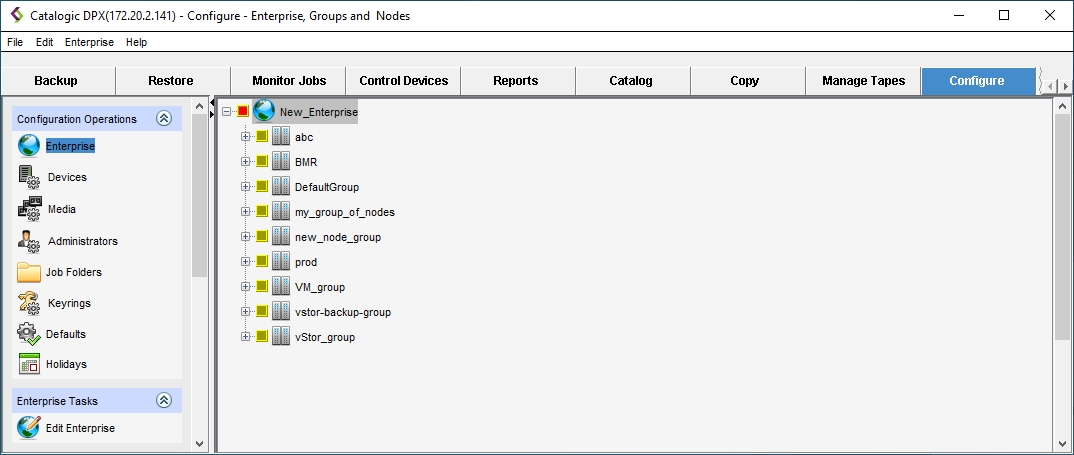Configuring the Enterprises
The Enterprise for Catalogic DPX is a total system including nodes, backup devices, media volumes, administrators, and so on.
There are two ways to add, edit, or delete your Enterprises: auto configuration and manual configuration.
To open the Enterprise Configuration window, select the Configure tab and then select Enterprise in the task panel.

Elements of the Configure Enterprise Window
The pane displays the Enterprise resource tree of nodes in the Enterprise. You can drill down to various levels by clicking the plus to the left of a resource icon. If you click an icon or name other than the Enterprise, its edit dialog appears in a pane on the right side of the Configure Enterprise window.
Right Pane
The right pane displays a dialog for the selected resource.
The following lists the relationship between the selection in the left pane and the default dialog in the right pane:
If you select an Enterprise
The Edit Enterprise dialog appears. See Editing an Enterprise Configuration.
If you select a Node Group
The Edit Node Group dialog appears. See Adding a Node Group.
If you select a Node
The Edit Node dialog appears. See Nodes.
Context Menus
You can access the Enterprise context menus by right-clicking an icon or name. Icons in the Enterprise resource tree have their own context menus with relevant items.
Menu Bar
In addition to the common menu options (see Common Menu Bar Options), the Configure Enterprise window contains the Enterprise menu.
Task Panel
The task panel buttons provide access to various tasks related to the Enterprise. Use the Search bar to find respective chapters in the documentation.
Last updated